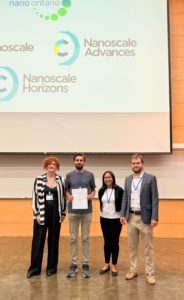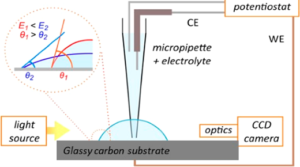Explore the new collection in Nanoscale and Nanoscale Advances
We are delighted to introduce a special themed collection published in connection with NANO 2024 which took place 3 – 8 November 2024 at Khalifa University, Abu Dhabi, UAE!
Guest Editors: Dr Daniel Choi, General Chair (Khalifa University, UAE) and Dr Dinesh Shetty, Chair of the Publication Committee (Khalifa University, UAE)
A note from the Guest Editors: “We hope that this themed issue will serve not only as a record of current advancements but also as a catalyst for future discoveries and collaborations in the field of nanomaterials and their multifaceted applications.”
A selection of articles from the collection are highlighted below. We hope you enjoy reading them!
 |
Editorial: NANO 2024 – nanostructured materials for energy, bio, photonics, and electronics applications Daniel Choi and Dinesh Shetty |
 |
Sustainable additive manufacturing through recycled and reinforced thermoplastic composites: state of the art Jatinder Singh, Rakesh Kumar and Santan Chaurasiya |
 |
HOT article: Sustainable interfacial solar steam generation with a biochar–alginate bilayer for RO brine treatment Sumina Namboorimadathil Backer, Ismail W. Almanassra, Alaa Abushawish, Muataz Ali Atieh and Abdallah Shanableh |
 |
Sol–gel synthesis and characterization of ZnO–SiO2 nanocomposites: a comparative study with pure ZnO and SiO2 A. Samuel, A. Abdullah, G. Xavier, S. Stephen, M. M. Zeidan, D. Choi and S. Abedrabbo |
Did you know?
At the nanoscale journal family, our themed collections are built by collaboration between our Guest Editors and expert Associate Editors. Our Guest Editors guide the scope and curate the contributions in our collections but all submissions are handled through peer review by our team of resident Associate Editors. This means that as an author you receive a consistent experience, and as a reader you can trust the quality of the science being presented.
If you have an idea for a topical collection in your research field, we’d love to hear from you! Get in touch here.








































